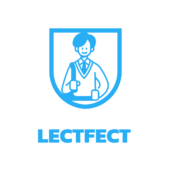 Incorporating technology resources not only amplifies the effectiveness of teaching but also equips students with essential digital skills for the future. By embracing these tools, educators can revolutionize traditional teaching approaches, making learning more interactive, accessible, and engaging. Stay tuned to explore the top technology resources that are reshaping the way we teach and learn in the digital age.
Incorporating technology resources not only amplifies the effectiveness of teaching but also equips students with essential digital skills for the future. By embracing these tools, educators can revolutionize traditional teaching approaches, making learning more interactive, accessible, and engaging. Stay tuned to explore the top technology resources that are reshaping the way we teach and learn in the digital age.
Educational Technology Resources
Types of Educational Technologies
Educational technology encompasses various tools and platforms that enhance the learning experience. Some common types include:
- Interactive whiteboards: These allow instructors to create engaging presentations and activities, fostering student participation.
- Learning management systems (LMS): Platforms like Moodle and Canvas facilitate online learning, resource sharing, and assessment management.
- Educational apps: Mobile applications like Khan Academy and Duolingo provide personalized learning experiences outside the classroom.
- Virtual reality (VR) and augmented reality (AR): These technologies offer immersive simulations and visualizations for complex subjects.
- Gamification platforms: Platforms like Classcraft and Kahoot gamify learning, increasing student motivation and engagement.
Impact on Teaching and Learning
The integration of technology resources has revolutionized traditional teaching methods. Teachers can now personalize learning, provide immediate feedback, and differentiate instruction to meet individual student needs effectively. These technologies create a more interactive and engaging learning environment, leading to improved student outcomes. Moreover, they promote digital literacy skills critical for success in the digital age.
Advantages of Educational Resources
Personalized Learning Experiences
 Educational resources offer personalized learning experiences by allowing students to progress at their own pace, focusing on their individual needs and learning styles. Teachers can use adaptive learning software to tailor lessons, assignments, and assessments to each student’s academic level, providing targeted instruction to enhance comprehension and retention. This personalized approach helps students advance academically while catering to their specific strengths and areas for improvement.
Educational resources offer personalized learning experiences by allowing students to progress at their own pace, focusing on their individual needs and learning styles. Teachers can use adaptive learning software to tailor lessons, assignments, and assessments to each student’s academic level, providing targeted instruction to enhance comprehension and retention. This personalized approach helps students advance academically while catering to their specific strengths and areas for improvement.
Increased Engagement and Interactivity
One of the key advantages of educational tech resources is the increased engagement and interactivity they bring to the learning process. Integrating technology into lessons through interactive whiteboards, educational apps, and gamification platforms captures students’ attention, making learning more enjoyable and motivating. Students can participate in immersive experiences through virtual reality and augmented reality applications, enhancing their understanding of complex concepts through hands-on learning. This heightened engagement fosters a collaborative learning environment where students actively participate and interact with course material, leading to improved comprehension and knowledge retention.
Challenges in Implementing Educational Technologies
Accessibility Issues
 Educational institutions often face challenges related to the accessibility of educational tech resources. Issues such as lack of internet connectivity in certain areas or limited access to devices can hinder the effective implementation of these resources. Students from underserved communities may experience difficulty in utilizing educational technology tools due to socioeconomic barriers. It’s crucial for educators and policymakers to address these accessibility issues to ensure that all students have equal opportunities to benefit from educational technologies.
Educational institutions often face challenges related to the accessibility of educational tech resources. Issues such as lack of internet connectivity in certain areas or limited access to devices can hinder the effective implementation of these resources. Students from underserved communities may experience difficulty in utilizing educational technology tools due to socioeconomic barriers. It’s crucial for educators and policymakers to address these accessibility issues to ensure that all students have equal opportunities to benefit from educational technologies.
Technological Adaptation for Teachers
Another challenge in implementing educational technologies is the need for teachers to adapt to new technological tools and platforms. Some educators may face difficulties in integrating technology into their teaching practices, either due to a lack of training or resistance to change. It’s essential for professional development programs to provide teachers with the necessary skills and support to effectively use educational technologies in their classrooms. By promoting technological adaptation among teachers, educational institutions can maximize the benefits of these resources and enhance the overall learning experience for students.
Emerging Trends in Educational Technology
Educational tech resources play a crucial role in transforming the landscape of modern education. By incorporating tools like interactive whiteboards, educational apps, and virtual reality, educators can create dynamic learning environments that cater to diverse student needs. Despite challenges in accessibility, the importance of adapting to these technologies through professional development cannot be overstated. Teachers must embrace these tools to provide enhanced learning experiences and foster student success. As educational technology continues to evolve, staying updated on emerging trends is essential for educators to harness the full potential of these resources and drive innovation in the classroom.

